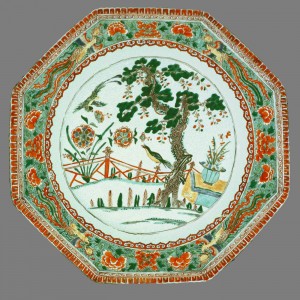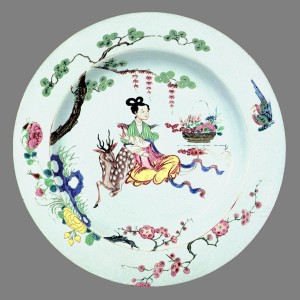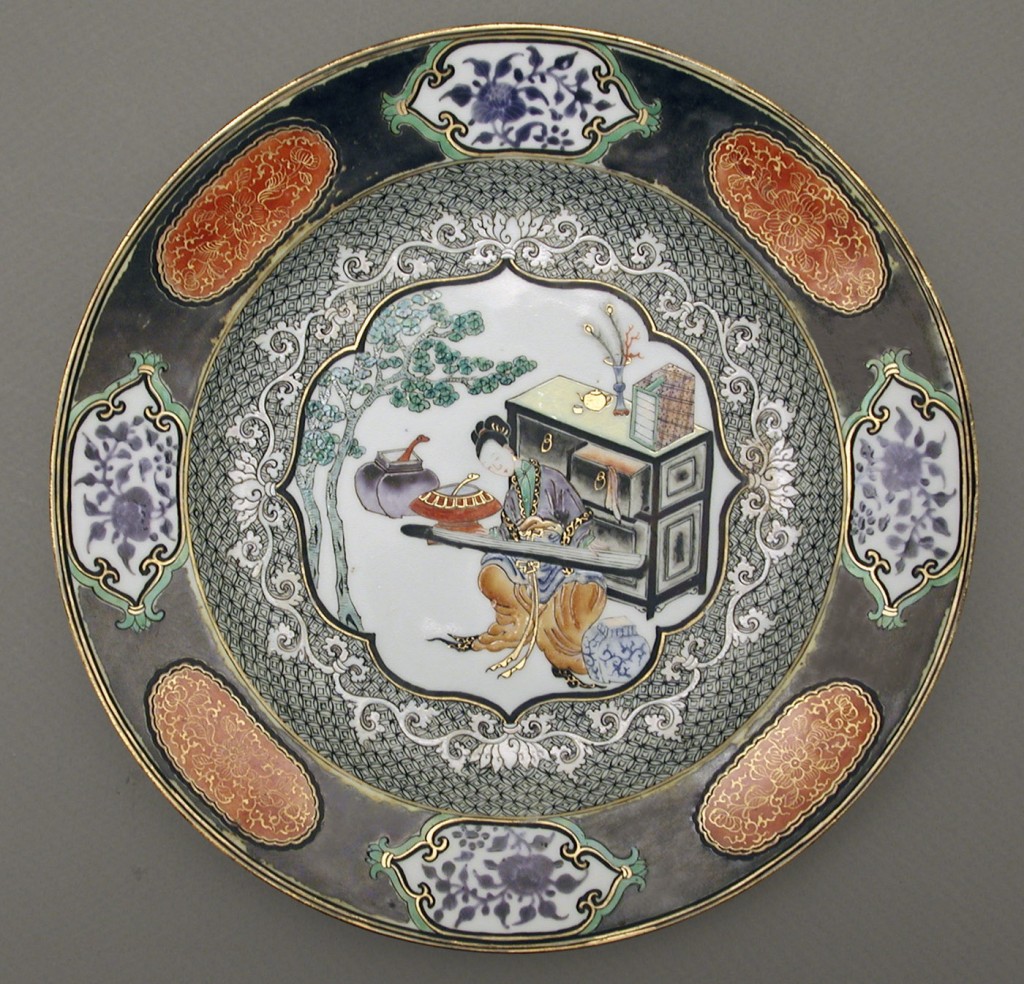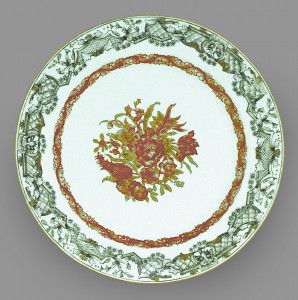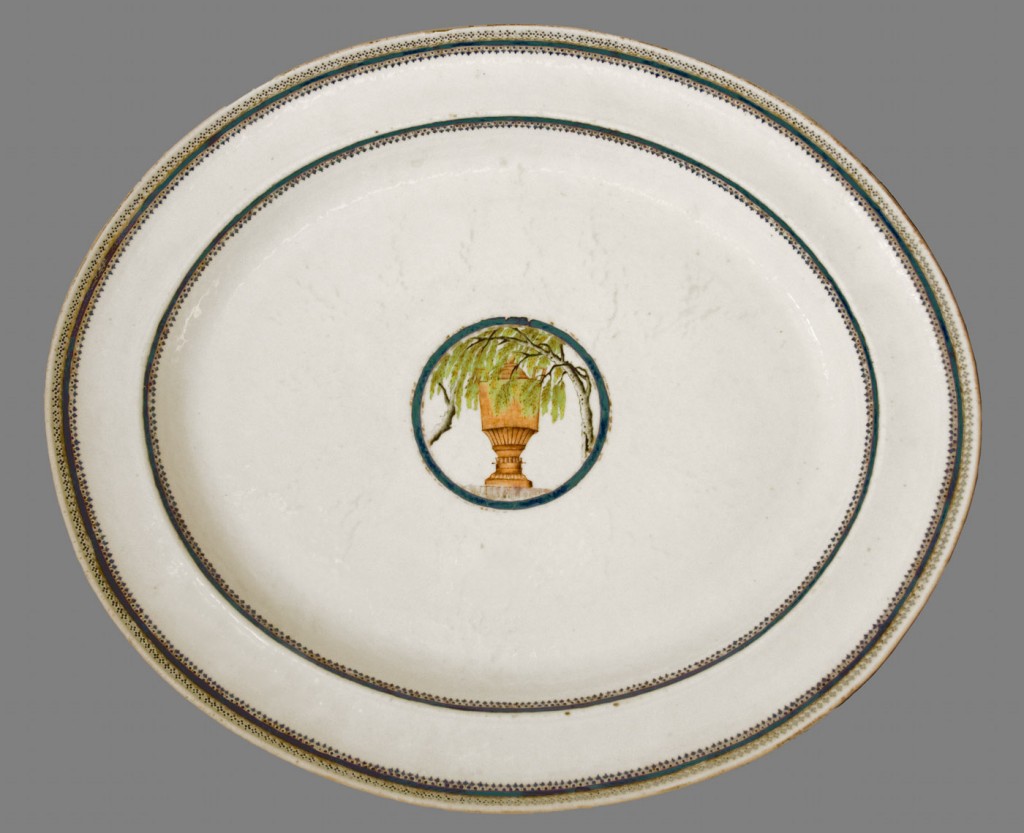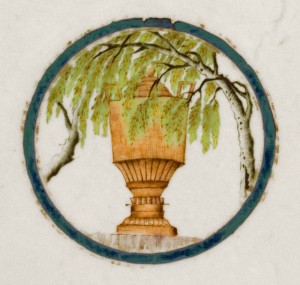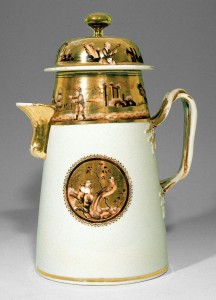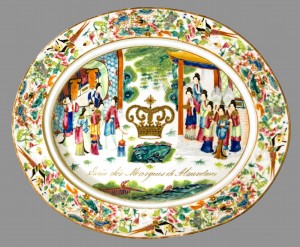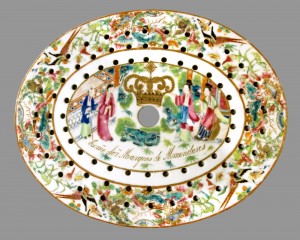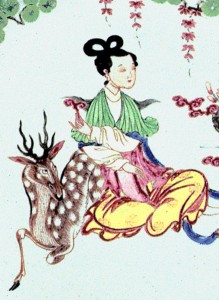 Wares produced for Continental European, Russian and Cuban Markets
Wares produced for Continental European, Russian and Cuban Markets
Because some patterns were universally popular, it can often be difficult to identify a particular intended market. Motifs such as the French royalist theme L’Urne Mystérieuse obviously would have appealed to certain French consumers. A scene of Peter the Great of Russia attempting to infiltrate the Dutch East India Company in Amsterdam might have been found entertaining by consumers in Russia and The Netherlands.
Dish, 1690–1710
Famille verte colors, featuring transparent greens and rusty reds, tend to date earlier than famille rose types, which did not appear until the late 1720s or 1730s. Garden scenes with fretwork fences, birds, and flowers were popular motifs for more than a century, whether in enamel colors or underglaze blue. Similarly colored wares also found favor in Britain and America.
Dish, 1723–35
This famille rose dish portrays either the ancient goddess Xi Wangmu (Queen Mother of the West) or Magu xianshou (the fairy Magu), who is on the way to visit her. Such themes often feature a spotted deer and, in the lady’s hand, “the fungus of immortality.” Augustus the Strong of Saxony (now part of Germany) acquired plates with this theme.
The Nadlers acquired this object in Paris, and it may have been made for the French market. The central scene is known as “Lady playing a Qi,” aand the elaborate border designs feature a silver ground that could be polished to a high sheen. Such grounds were only used during a brief period, as the silver was prone to tarnishing.
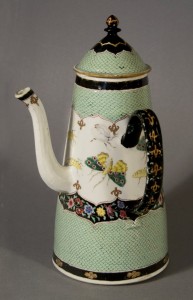 Coffeepot or chocolate pot, about 1750
Coffeepot or chocolate pot, about 1750
Based on the small number of tea, coffee, and chocolate wares in this pattern, all the items may have belonged to a single set. The decoration on these wares seems to have been inspired by designs created in the 1730s by Cornelis Pronk for orders of Chinese porcelain for the Dutch East India Company.
Dish, 1740‒55
The elegant gray (en grisaille) and gilt border of this dish is a type that appealed to several European markets. Similar borders are found on armorial services created for wealthy Dutch families as well as on one service bearing the coat of arms of the Ovando family of Mexico.
The L’Urne Mystérieuse scene derives from a print dating to the French Revolution and memorializes the executed royal family. The urn stem forms profiles of Louis XVI and Marie Antoinette; the willow branches, profiles of their son and daughter. Some dishes and plates show different borders and, occasionally, monograms.
Chocolate pot, 1800–1830
This chocolate pot has a replacement brass knob on the lid, covering the original hole for the kopf, which was used to stir the contents. The gilt and painted ornament—a combination of reserves portraying birds and bands of European figures in landscapes with ruins—imitates designs on some Meissen porcelain.
Russian Market
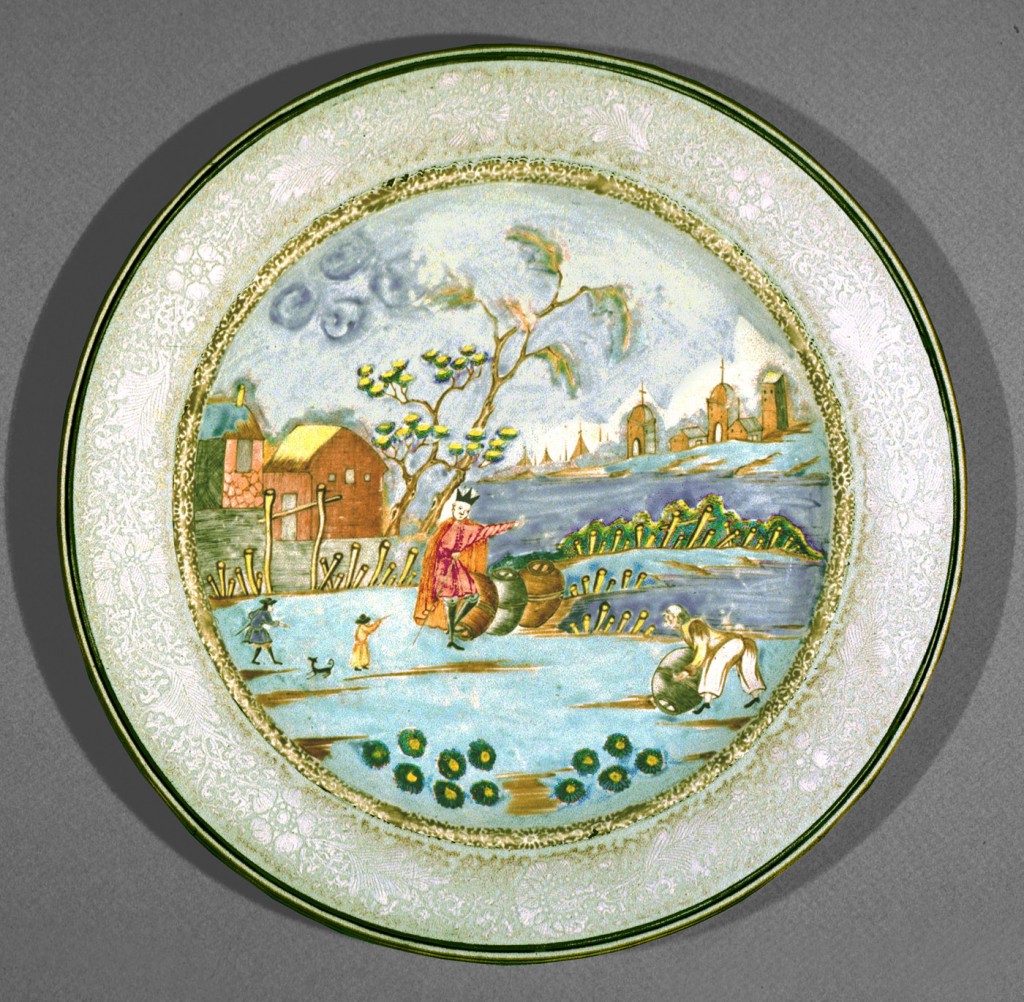 Dish commemorating Peter the Great of Russia, about 1750
Dish commemorating Peter the Great of Russia, about 1750
This dish portrays Peter the Great of Russia during his 1697 visit to Amsterdam to learn the secrets of the Dutch East India Company. Traveling incognito as Peter Mikhailov, he hoped to work in the shipyards but is said to have been noticed and eventually exposed because of his huge size.
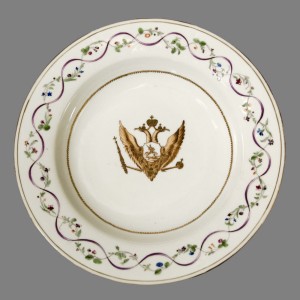
Soup plate made for Catherine the Great of Russia, about 1785
This plate is from the second of three Chinese services displaying imperial Russia’s double-headed eagle. The other services date to around 1740 and 1820. The border pattern shown here may copy one used on creamware made by Wedgwood, which also created a service for Catherine the Great.
Cuban Market
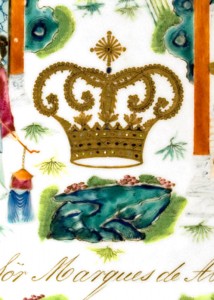
Dish and strainer made for the Marques de Almendares of Cuba, about 1842
The Spanish Ignacio Herrera, purchased the title of Marques (or Marquis) de Almendares in 1842 and may at about the same time have ordered the service including this dish and strainer, the latter pierced to allow fish or meat juices to drip through. Herrera owned large coffee and sugar plantations as well as railroads and a textile mill in Cuba.

